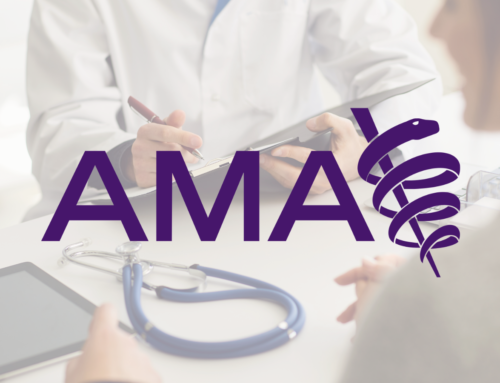Werner Rodorff, CTO and General Manager for the Global AIS Template (GAT) division of CompuGroup Medical US, delivered a presentation to ArMA members during the recent 2019 ArMA Spring Conference. The topic for this presentation was, “The Principles of Machine Learning & Applications in Healthcare.”
Mr. Rodorff introduced the basic concepts of Machine Learning (ML) as a part of the (new) second generation of machines. The first generation of machines were designed to support or enhance the human or animal muscles through the use of steam engines, automobiles, etcetera. In comparison, ML is intended to simulate the human learning processes while supporting the human brain.
 Mr. Rodorff understands the need to synthesize the rapidly growing data and advancements with which doctors are currently faced, due to his thirty years of experience working within the field of medical technology. He reminded all who were in attendance that medical knowledge is advancing at an exponential pace. In the 2011 Study in Transactions of the American Clinical and Climatological Association, the scientists performed an estimate on the rate of how fast medical knowledge would grow. The outcome was that medical knowledge was estimated to double every 18 months. This means, considering this rate is constant, that the global medical knowledge in 2012 would only be 7% of the global medical knowledge 10 years later. It was further predicted within that same study, that the doubling time of global medical knowledge would be 73 days by the year 2020.
Mr. Rodorff understands the need to synthesize the rapidly growing data and advancements with which doctors are currently faced, due to his thirty years of experience working within the field of medical technology. He reminded all who were in attendance that medical knowledge is advancing at an exponential pace. In the 2011 Study in Transactions of the American Clinical and Climatological Association, the scientists performed an estimate on the rate of how fast medical knowledge would grow. The outcome was that medical knowledge was estimated to double every 18 months. This means, considering this rate is constant, that the global medical knowledge in 2012 would only be 7% of the global medical knowledge 10 years later. It was further predicted within that same study, that the doubling time of global medical knowledge would be 73 days by the year 2020.
So. What does this mean for healthcare professionals? – No one can keep up!
Most EHR systems will often offer analytics or big data solutions that allow the user to aggregate and drill-down into existing data for analysis. However, ML applications go beyond the analytics of existing data. ML takes the known data and combines this with known input and known output (existing or static data). From the known data, ML is able to extract knowledge through algorithms and predict the outcome of unknown data or new input.
If we understand that the purpose of ML is to extract knowledge from data, then we can try to understand that ML serves as an intersection of statistics, artificial intelligence, and informatics. What many don’t realize is that ML is already used in many ways: facial recognition for photos in smartphones and other applications, automation of recommendations for food and products, and scientific or medical applications like DNA sequencing and personalized cancer treatments. ML is already active in every complex website such as Facebook, Amazon or Netflix; additionally, each currently use several machine learning models per page.
While ML is utilized in many applications today, it is still somewhat new to the medical field. Currently, the healthcare field is fairly limited due to the complexity and limited data. Another limitation is that Patient Health Information (PHI) is often still free text instead of being structured data. However, especially for unstructured data, deep learning techniques available today already can transfer or translate unstructured PHI into structured and/or coded data like ICD, SNOMED, LOINC, and others.
As the medical field embraces the requirements for “Meaningful Use” of electronic medical records, the data will become more readily available, which will allow for more advanced learning and predictive analysis.
For many, the idea of utilizing ML can still be somewhat unnerving. By explaining and providing examples of ML in real time, Mr. Rodorff was able to help with some demystification of ML and show that it is currently a vital aspect of our daily lives. He was also able to show how these advanced artificial intelligence tools can be utilized through applications in healthcare to assist with providing better information and decision support to doctors at the point of patient care in areas such as detection of malignant versus benign breast cancer tumors.
ML can enhance the ability of the physician encounter with the patient through high-risk identification, personalized treatment, predicted outcomes, and outbreak detection. For the physician, ML can offer an optimized EHR workflow, provide a voice to text notation, scheduling assistance, and automated billing warnings. Each of these are just a few possibilities of the many potential benefits that can be offered through ML.





